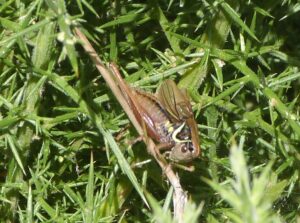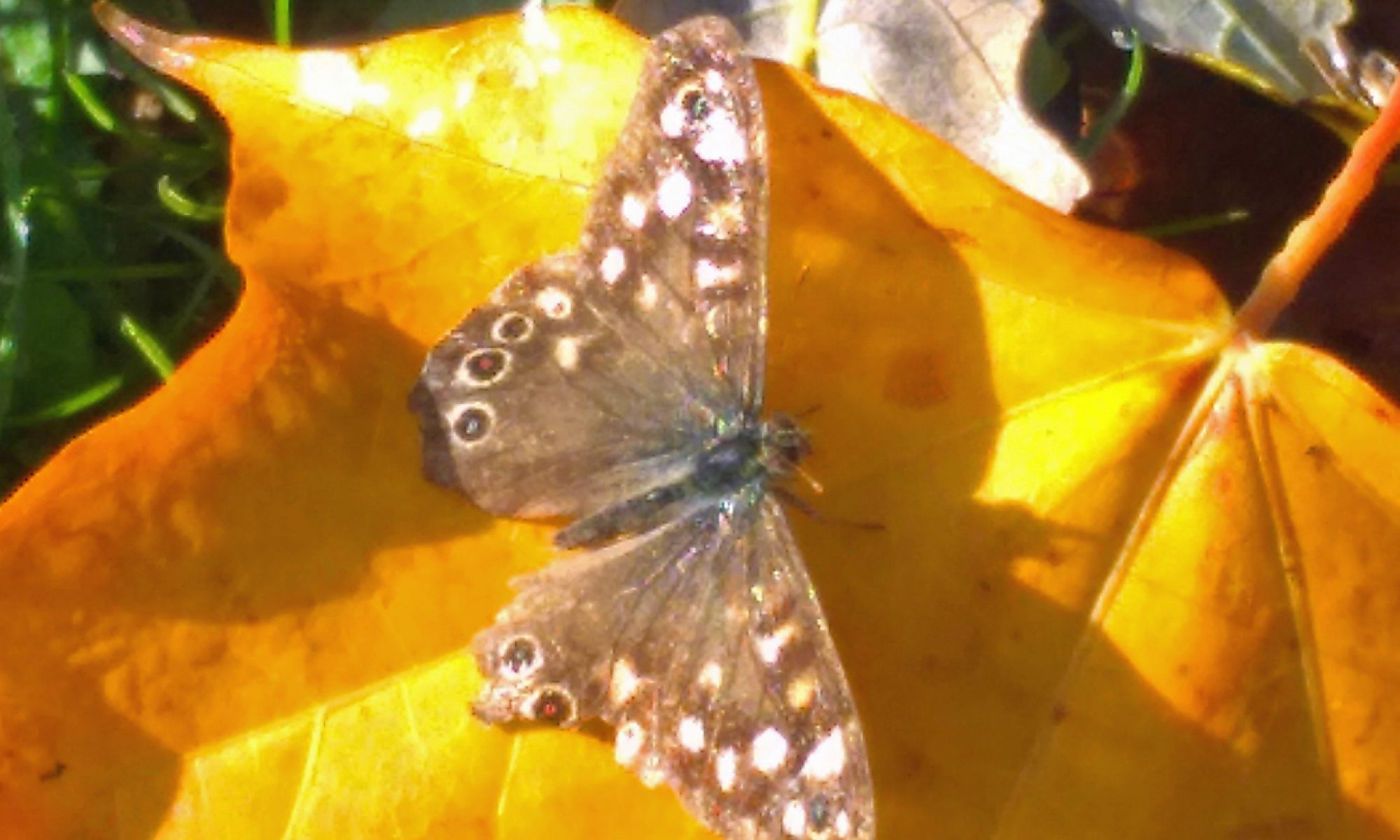Climate change and the new arrivals
| Links to the story | Key Stage 2 and 3 programmes of study | Possible learning outcomes | Big ideas |
| Climate change: new arrivals |
how organisms affect, and are affected by, their environment, Science National Curriculum, KS3 |
Know that climate change with bring new species to the wood |
adventures in time and in space climate change the environment |
This the third in a series of stories written with St Francis Primary School, Nailsea, about the effects of climate change on the area around Nowhere Wood. Andrew Town’s detailed observations over the years have recorded the arrival of some insects that are recognised nationally as arrivals due to the effects of climate change. Here are excerpts from his field notes:
August 2019 – a pair of Roesel’s bush crickets was a surprise find in Golden Valley. Unlike many crickets and grasshoppers these are easily identified by the bright yellow line around their pronotum and three bright spots on the thorax. Until recently they were found in this country only in the coastal dunes and marshes of SE England. They have now begun to spread west and north apparently encouraged by the recent years of hotter summer weather. I have never seen one before. They nearly all have short wings so are flightless but still manage to create song with their wings – see photo 1.

June 2020 – you may remember last year I found a pair of Roesel’s bush crickets in Golden Valley field. Until relatively recently these European crickets had just a small foothold in the coastal marshes of Kent. They started to migrate westwards and northwards in the late 1900s.
 By 2001 they had reached Rutland and now they are quite common across the south of England. Quite an achievement for a specie where 99% of the population is short winged and flightless. This is a nymph so proof that they bred in GVF at least last year. Nymphs are easily recognisable by the yellow stripe that surrounds their pronotum*.
By 2001 they had reached Rutland and now they are quite common across the south of England. Quite an achievement for a specie where 99% of the population is short winged and flightless. This is a nymph so proof that they bred in GVF at least last year. Nymphs are easily recognisable by the yellow stripe that surrounds their pronotum*.
*The pronotum is a part of an insect’s body. It’s the top part of the first segment of the thorax, which is the middle section of an insect’s body. The pronotum can vary in shape and size depending on the insect species. It often serves as a protective shield for the insect’s head and can have different colors and patterns.
Bee flies not only mimic solitary bees but also prey on them by dropping their eggs into the bees’ nest where they hatch and devour the bee larvae. The ‘downland villa’ bee fly was a rare specie only found in the Chilterns and had not been recorded for 50 years prior to 2000. Because it is on the red list of endangered species the photo had to be submitted to the Avon Recorder for verification. Thanks to help from Rob Martin for doing this after helping with the initial ID. It has now been verified but it has recently made a comeback including in this area. Good news for the bee fly but disappointedly not as rare a spot as at first expected. Still a first record for the Park.

